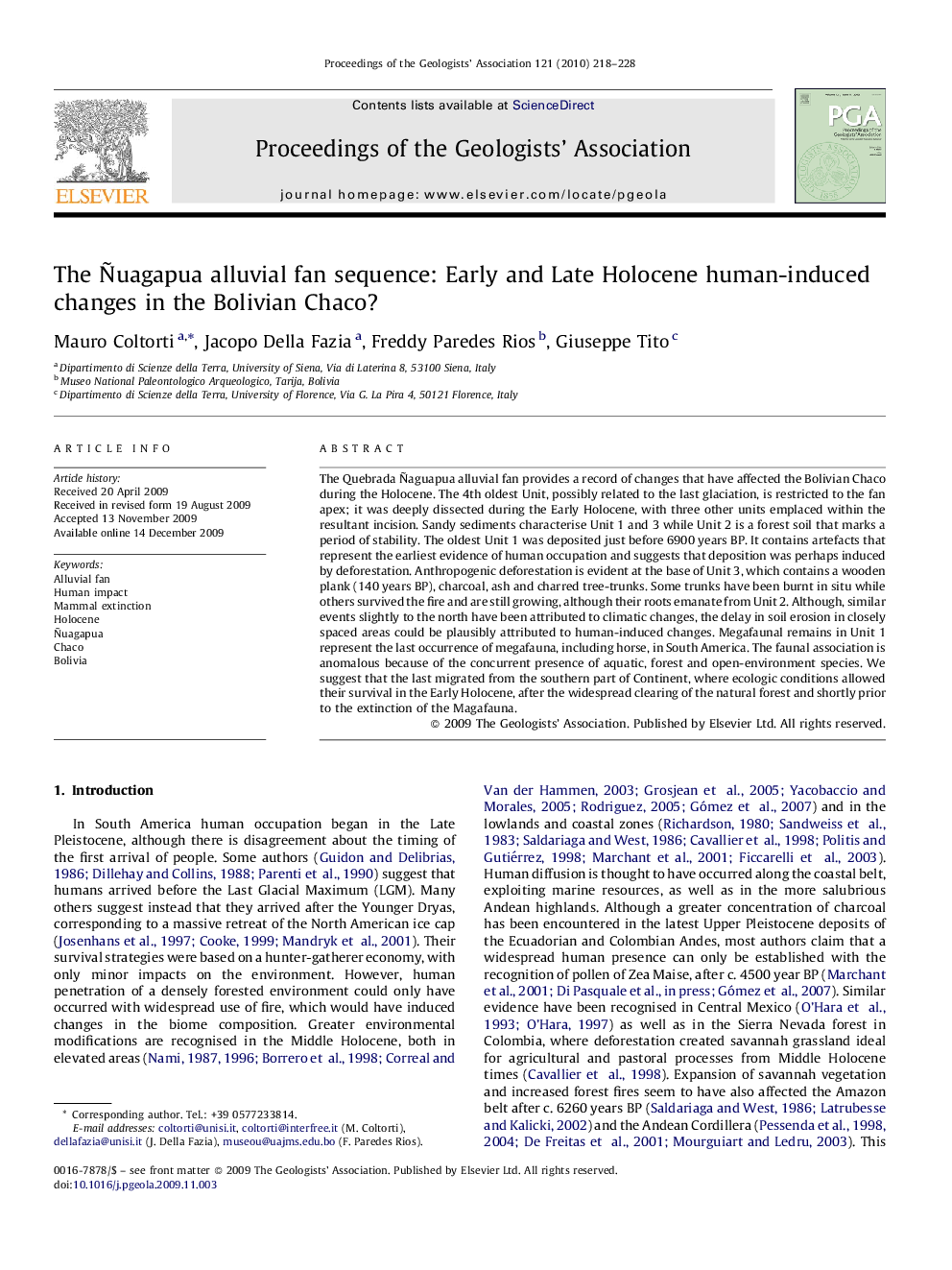| کد مقاله | کد نشریه | سال انتشار | مقاله انگلیسی | نسخه تمام متن |
|---|---|---|---|---|
| 4735185 | 1640673 | 2010 | 11 صفحه PDF | دانلود رایگان |
عنوان انگلیسی مقاله ISI
The Ãuagapua alluvial fan sequence: Early and Late Holocene human-induced changes in the Bolivian Chaco?
دانلود مقاله + سفارش ترجمه
دانلود مقاله ISI انگلیسی
رایگان برای ایرانیان
کلمات کلیدی
موضوعات مرتبط
مهندسی و علوم پایه
علوم زمین و سیارات
زمین شناسی
پیش نمایش صفحه اول مقاله

چکیده انگلیسی
The Quebrada Ãaguapua alluvial fan provides a record of changes that have affected the Bolivian Chaco during the Holocene. The 4th oldest Unit, possibly related to the last glaciation, is restricted to the fan apex; it was deeply dissected during the Early Holocene, with three other units emplaced within the resultant incision. Sandy sediments characterise Unit 1 and 3 while Unit 2 is a forest soil that marks a period of stability. The oldest Unit 1 was deposited just before 6900 years BP. It contains artefacts that represent the earliest evidence of human occupation and suggests that deposition was perhaps induced by deforestation. Anthropogenic deforestation is evident at the base of Unit 3, which contains a wooden plank (140 years BP), charcoal, ash and charred tree-trunks. Some trunks have been burnt in situ while others survived the fire and are still growing, although their roots emanate from Unit 2. Although, similar events slightly to the north have been attributed to climatic changes, the delay in soil erosion in closely spaced areas could be plausibly attributed to human-induced changes. Megafaunal remains in Unit 1 represent the last occurrence of megafauna, including horse, in South America. The faunal association is anomalous because of the concurrent presence of aquatic, forest and open-environment species. We suggest that the last migrated from the southern part of Continent, where ecologic conditions allowed their survival in the Early Holocene, after the widespread clearing of the natural forest and shortly prior to the extinction of the Magafauna.
ناشر
Database: Elsevier - ScienceDirect (ساینس دایرکت)
Journal: Proceedings of the Geologists' Association - Volume 121, Issue 2, 2010, Pages 218-228
Journal: Proceedings of the Geologists' Association - Volume 121, Issue 2, 2010, Pages 218-228
نویسندگان
Mauro Coltorti, Jacopo Della Fazia, Freddy Paredes Rios, Giuseppe Tito,